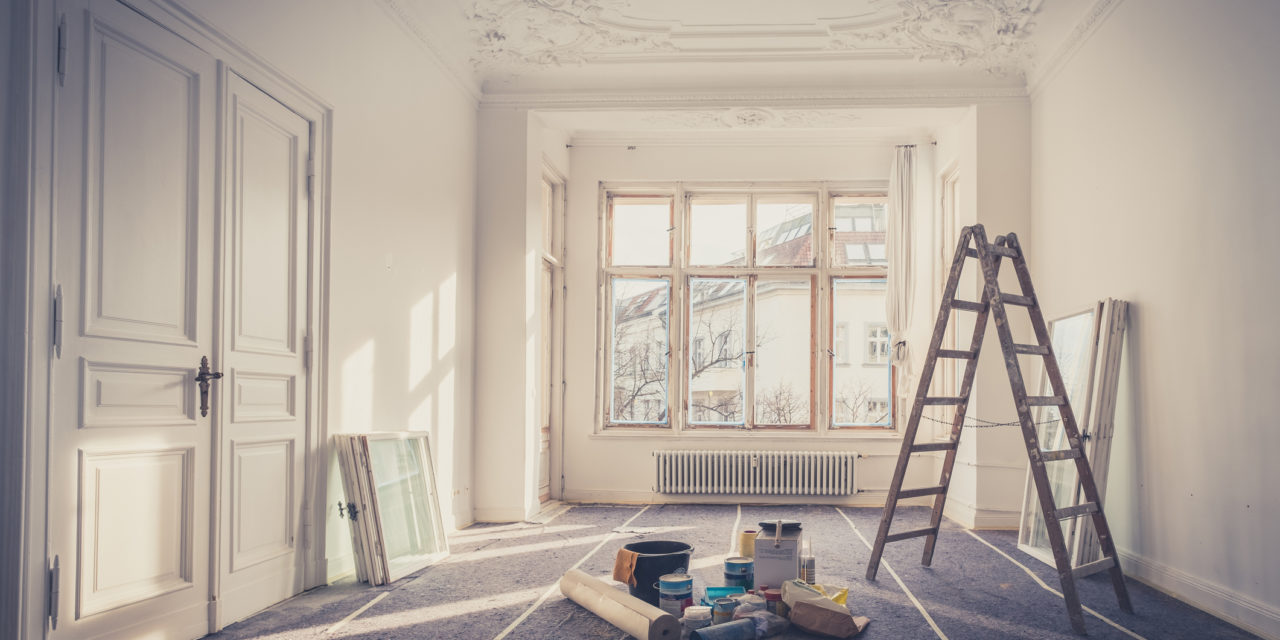If you plan to stay in your home well into your golden years, doing renovations before you retire can make your house more safe and accessible.
Nearly 90 percent of people over age 65 want to stay in their homes as long as possible, says research by the National Conference of State Legislatures with the AARP Public Policy Institute. But many wait too long to make needed renovations, says Marianne Cusato, an adjunct associate professor at the University of Notre Dame’s School of Architecture. “You don’t wait until you have mobility issues to make changes to your house,” she says.
Some preemptive renovations make more sense than others. Installing ramps to accommodate a wheelchair, for example, is an expensive and potentially unnecessary change because “not everyone winds up in a wheelchair,” Cusato says.
Still, some universal design changes and remodeling will help you grow older in your home comfortably and safely.
1. A Walk-In Shower
For older adults with mobility problems, climbing over a bathtub edge can be difficult. A walk-in shower can solve this problem and make your bathroom look more modern, says Joanne Theunissen, 2018 chairwoman of the National Association of Home Builders.
Cost: Replacing an old tub or shower with a walk-in shower can be expensive. Although some walk-in shower kits start as low as $200, you need to be knowledgeable in plumbing and framing to do the work yourself. Having one of these kits professionally installed will add $750 to $2,500, depending on the bathroom layout and plumbing requirements, according to home-improvement resource BobVila.com. For a professionally installed custom shower, expect to pay $6,500 to $15,000 or more, depending on the shower’s size and the materials.
2. Grab bars
Every 11 seconds, an older adult is treated in the emergency room for a fall, the National Council on Aging reports. Adding grab bars in select areas can reduce your risk of falling. But “just having a grab bar in every room of your house for the sake of having one doesn’t make a whole lot of sense,” says Steve Hoffacker, a certified aging-in-place specialist and instructor. “You have to think strategically about where you want to install them.”
Your main shower, even a walk-in, should have one. And a spot that deserves a grab bar yet is often overlooked is the front door. “When you’re trying to balance packages or grocery bags that you’re holding, it’s nice to have something to hold onto other than the door handle,” Hoffacker says.
Cost: Grab bars generally require professional installation. On average, it costs $140 to have three grab bars installed, according to Fixr.com.
3. A first-floor master suite
One of the best ways to age-proof a house is by having a master bedroom and bathroom on the first floor, says Mark Hager, founder of AgeInPlace.com. “You want to have everything you need on one level so that you don’t have to climb stairs as you get older.”
Cost: If you don’t have first-floor space you can turn into a master suite, you’ll have to build an addition. But it costs a lot of money to increase your home’s footprint. Homeowners spend an average of $80 to $200 per square foot, HomeAdvisor says. So if you’re building a 250-square-foot bedroom and bathroom, it can cost $20,000 to $50,000. “It’s a big expense, but it really pays,” Hager says.
4. Door lever handles
Nearly half of people age 65 or older have arthritis, reports the Centers for Disease Control and Prevention. That can make even grasping a doorknob painful. One solution: Replace doorknobs with lever handles.
Cost: At Home Depot, stainless lever handles start at about $5 apiece. And you don’t need to hire a professional: This is an easy DIY project.
5. Carpeting
Floor surfaces can be slippery, depending on their material, so some homeowners cover hardwood or laminate floors with rugs. But “rugs can create a hazard, because they change the grade of the floor,” says Cusato, the Notre Dame professor.
A Google search for “slip-resistant flooring” turns up seemingly endless options. So let’s simplify things. Replace any hardwood, laminate or tile flooring with carpeting in every room except the kitchen, bathrooms and mudroom. “Carpet can help cushion a fall much better than a hard surface,” Cusato says.
One caveat: Most wheelchairs and walkers don’t roll over carpet as well as over hard flooring, so make sure the carpet is no higher than a half-inch and the padding underneath is firm, not squishy.
Cost: Many factors must be considered: room size and shape, carpet material, furniture removal, labor. But in general, high-quality carpeting and padding can be installed for $19 to $38 a square yard, or $300 to $600 for a 12-by-12-foot room, CostHelper.com says.
6. Pullout drawers
Pullouts are helpful as you age by giving you easier access to dishes, tools and cookware. Indeed, “you don’t want to have to bend over or reach the back of the cabinet to take out a pot or pan, because you might have trouble getting back up,” Cusato says.
Cost: The price tag varies depending on the size of the cabinets, but a 22-inch-deep pullout shelf costs $58.69 at Home Depot. And you don’t need a handyman to replace shelves with pullout drawers.
 Photo Credit: hanohiki (iStock).
Photo Credit: hanohiki (iStock). 



Comment on: 6 Ways to Renovate Your Home for Retirement